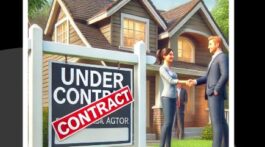Renovation Mortgage Loan Products Reviewed
Are you considering purchasing a home that requires a significant amount of work? If so, you may want to look at one of a few renovation loans available.
Renovation loans can be the perfect solution when purchasing a fixer-upper or a house being sold as-is. When there is a shortage of move-in-ready homes, it makes sense to consider purchasing and fixing up outdated dwellings that need repairs.
Let’s review some of the best rehab loans so you can make the best choice for your needs.
We’ll look at three of the mainstream renovation loans, which are the FHA 203k loan which is insured by The Federal Housing Administration, the HomeStyle loan, guaranteed by Fannie Mae; and The CHOICERenovation loan, guaranteed by Freddie Mac.
What is an FHA 203k Loan?
One of the best loan products is the FHA 203k loan when you need to make improvements to a house. FHA 203k loans allow you to roll the costs of all the improvements into one permanent loan.
An FHA 203k is used when you want to remodel what will become your primary residence. If you have a credit score higher than 580, you will be able to get a mortgage with only a 3.5 percent down payment.
It is possible you could get a loan with a credit score as low as 580, but that is far more challenging. Many lenders will not provide a loan with a score that low.
The FHA 203k loan program has two different types of mortgages – limited and standard. The limited FHA loan limits renovation costs to be less than $35,000. The property also cannot have significant structural work.
The FHA standard loan will allow you to work on home improvements that cost more than $35,000. The loan can also be used when structural issues need correction at the property.
The 203k FHA loan requires you to use a HUD consultant that will help with getting bids from contractors. To take out a 203k loan, you will need to be a US citizen.
What is the Fannie Mae HomeStyle Loan?
The HomeStyle loan is different from the FHA 2o3k loan in a few respects. For one, you can use the HomeStyle loan as an investor. It can be used to renovate a second home, investment property, or your primary residence.
The HomeStyle loan can be used to purchase and renovate any type of property.
The credit score requirements for a HomeStyle loan are a bit more strict. You need to have a score of at least 620 to qualify for this loan. The down payment requirements also vary slightly.
You will need to have either 3 or 5 percent depending on whether the property is owner-occupied or if you’re a first-time homebuyer. If you qualify for the HomeReady program, you’ll be able to put down only 3 percent.
When putting down less than 20 percent, you will be required to have private mortgage insurance. The HomeStyle loan has minimal restrictions on home improvements. They will have to pertain to the property itself and not personal items.
Of course, it makes sense to always spend money on home improvements that increase value.
What is The CHOICERenovation Loan?
The ChoiceRenovation loan is yet another excellent mortgage product when you need to renovate a property. With this type of rehab loan, you can finance improvements that cost up to seventy-five percent of the property value after renovations are completed.
For example, if you purchase a house for $300,000 that needs $100,000 in improvements, you’ll need to meet the credit score and debt-to-income requirements for a $400,000 mortgage.
If the property you’re purchasing only needs minor cosmetic improvements, Freddie Mac has an express loan program called the CHOICEReno EXPress loan. With this program, the reno work can cost up to ten percent of the post-renovation value of the house.
In some rural areas, it will bump up to fifteen percent. The renovation work must be complete within 180 days. There is also a requirement to have the home inspected once the work is finished.
There are always unexpected costs that pop up when buying a house. You can use your rehab loan to help budget for such expenses.
Final Thoughts on Rehab Loans
There are far fewer housing choices available in today’s real estate market. While renovating a home may not be ideal for some folks, doing so allows you to build sweat equity rather quickly.
You can purchase a fixer-upper home and make it something truly special. Each of these home renovation loans has its pros and cons.
Speaking to a qualified mortgage professional who can guide you on which loan will be best will be helpful. Some specific lenders will be better to work with for these loans. It will be best to do some due diligence on the lender you select.
The lender you work with could be a deciding factor on whether you have a stress-free financing experience.
Hopefully, you now have a much better understanding of how home renovation loans work.
About the author: The above article on home renovation loans was written by Bill Gassett. Bill has expertise in numerous topics, including financing, home improvements, moving, and general real estate. He writes for numerous prestigious mortgage and real estate publications.














No Comment